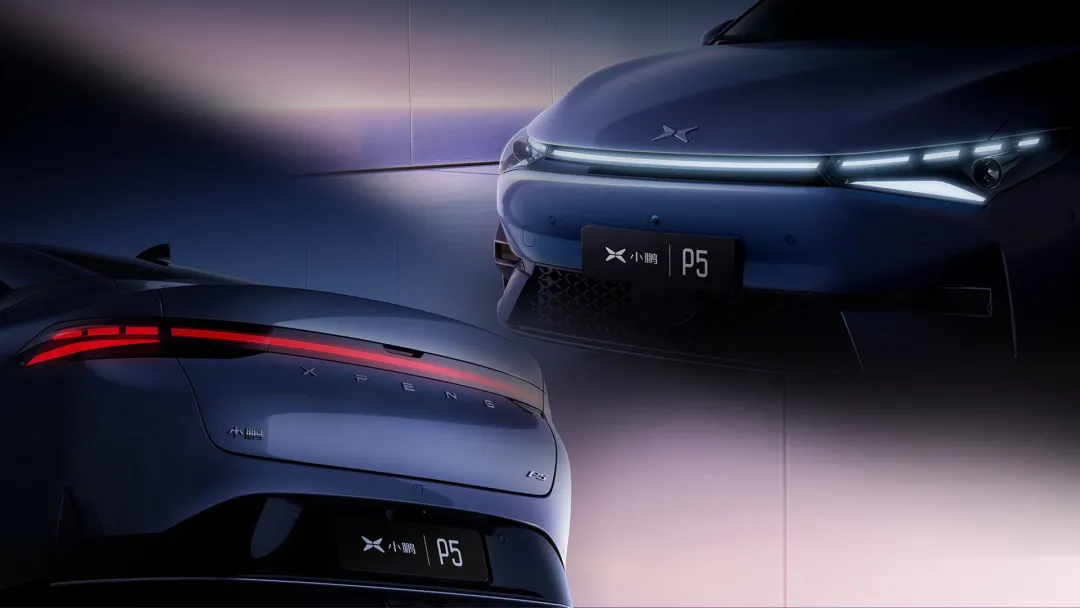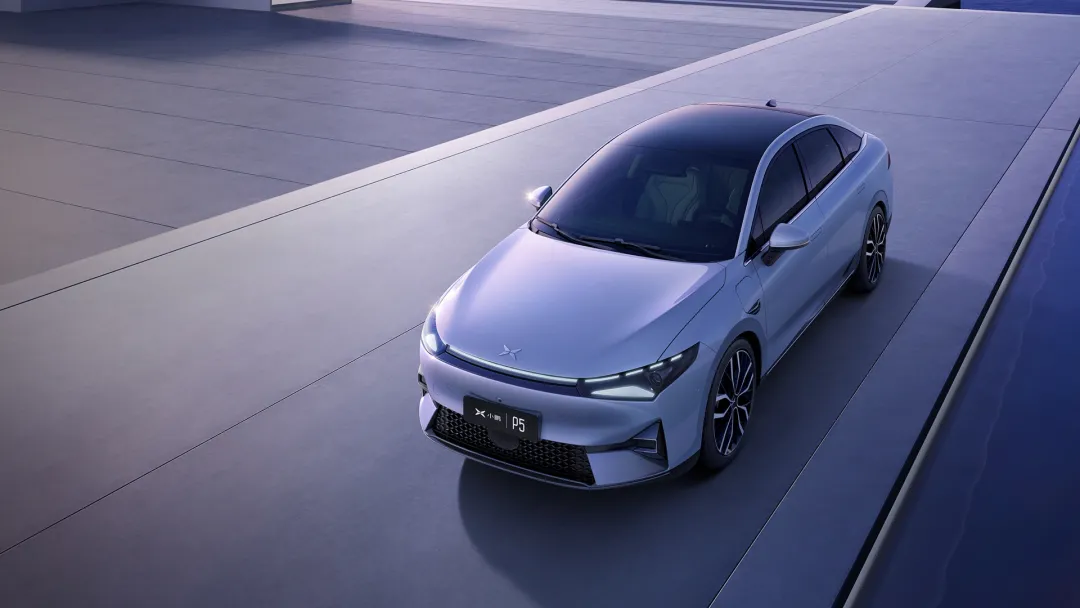Author: Wang Xuan
If the three top companies in the new Chinese car industry are grouped into an elite class, then NIO, which is dedicated to serving its users, is the most diligent one, and Ideal, with accurate product positioning, is the clearest one in thinking, while XPeng is the most invisible one…
Therefore, since entering the car manufacturing industry, XPeng has been tirelessly seeking for its own existence. The top-mounted driving recorder on the XPeng G3 is the best example. At that time, XPeng was a startup company, and it was difficult for them to tackle the problem of intelligence from a global perspective. Therefore, the approach of starting from automatic parking and finding the focal point to tackle each technical difficulty one by one was not wrong. It was also easier to enlarge the image of the brand in the minds of consumers, and it was also a means of seeking existence in the market.
XPeng P7 is a relatively successful product. I thought that XPeng’s products would gradually move in the right direction after P7, but I don’t know why. I saw that green and inexperienced XPeng again in P5.
About positioning
The styling of XPeng P5 determines that they will not make any efforts on positioning because it has not learned from the advantages of XPeng P7’s styling. The two laser radars under the headlights might make people think they are fog lights. The designer also used an unknown triangular element to encircle the laser radars, just like the traditional intake duct of a fuel-powered car. Not only does it lack the overall sense of the front face of XPeng P7, which brings visual impact to people, but it also has a strong “Renaissance” atmosphere. In summary, the design is becoming more and more cyclical.
There is no exaggeration to say that if the car logo is changed to GAC Aion, Geometry, or BAIC, it would make more sense. Once it comes to positioning, XPeng P5 will be submerged in many competing products due to its Volkswagen-like face. Therefore, XPeng did not mention the product positioning of P5 at the press conference, but emphasized only four words, “leading at the same level.”
About visibilityAlthough the information disclosed at this press conference is limited, the most important point is undoubtedly the two DJI LiDAR sensors mounted on the car. XPeng Motors claims that the P5 will be the first mass-produced car equipped with LiDAR, but the delivery time will not be until the fourth quarter of this year. In XPeng’s ADAS logic, LiDAR is mainly responsible for handling corner cases, i.e., extreme situations, so the P5 will also come with the XPeng Xpilot 3.5 system, which brings NGP city-use scenarios.
The rapidly developing internet industry has propelled the development of autonomous driving and also spawned a huge food delivery industry. Therefore, the current road network in Chinese cities is a dead spot for developing high-level ADAS systems. The two LiDAR sensors on the XPeng P5 are also prepared to deal with complex situations in cities and have a stronger ability to identify obstacles in emergency situations. Unlike the top-mounted LiDAR on the NIO ET7, the two sensors on the XPeng P5 are lower down, with less extensive coverage and a narrower field of view for a single sensor, but with a better top view.
As for the city-scene navigation-type ADAS, due to policy reasons, car manufacturers still cannot obtain high-precision maps of the urban road network. XPeng’s XPilot 3.5 is a product based on ADAS maps, and its specific usage experience still needs to be evaluated through practical field testing.
It has to be said that XPeng has made the same mistake with the P5 as it did with the G3’s price reduction. While P7 owners were thrilled with the open and available NGP with XPilot 3.0, the lower-tier P5 was already equipped with LiDAR, which could likely affect the loyalty of P7 owners to the brand and future sales of the P7. Although technological development is changing rapidly and car manufacturers must keep up with the trend in order to survive in the market, there still needs to be a clear order of priorities in product planning, or else they may hurt themselves while delivering a heavy blow to their competitors.
After the impressive debut of LiDAR, XPeng, as one of the freshest forces in the automotive industry, wanted to do something that distinguished its products from those of traditional car manufacturers, resulting in the following three product points.Let’s talk about the positives. The sleep mode and cinema mode are both features derived from Tesla’s camping mode. When the vehicle is stationary, the advantage of the electric car is that it does not need to be driven like a fuel car to power the air conditioning equipment, and there is no need to worry about the battery feeding or engine noise interference, so this characteristic of the electric car is more conducive to users carrying out activities inside the vehicle when it is stopped.
小鹏(XPeng) captures this feature and creates sleep mode and cinema mode on the P5. XPeng provides a front bed on the P5, which can be turned into a bed with the seats laid out inside the car, and the mattress can be conveniently stored. At the same time, users can activate the sleep mode by voice, and multiple hardware devices in the car will respond accordingly, such as lowering the sunshade and playing soothing music.
In the cinema mode, the front seat of XPeng P5 will be folded down and spliced with the rear seat to form a comfortable recliner. At the front position, a front curtain will automatically drop down. All the hardware used in these two modes is connected to the car’s internal ecology, so users can use them very conveniently, and all of them support voice control.
Now let’s talk about unnecessary features. The first is the full-scene voice function. Unlike the “speak what you see” function in the car’s built-in system, XPeng’s full-scene voice system is a feature beyond the car’s built-in system and theoretically can cover parts of the hardware inside the car. One function displayed at the launch conference was voice-controlled assisted driving, where the driver can say, “Hello, XPeng, move to the left lane,” the vehicle will complete the lane-changing operation through voice instructions. However, this function is superfluous. The operation that could have been completed by simply flicking the turn signal is now extended by the extra step of activating the voice assistant and issuing the command.
Not just voice-controlled lane changes, in complex road conditions, both the driver and the car have only a few seconds to operate, so voice-controlled assisted driving is definitely a waste of time. However, full-scene voice control will be a trend in the future, but the premise of improving convenience is definitely not to waste more time.### Summary
Although the P5 didn’t come with a mounted dashcam this time around, it was equipped with a drone operating system that can be connected to the car through voice control, which, in my opinion, is just a gimmick.
The P5 and G3 are products on the same platform, but unlike the G3, sedans are not easy to generate high premiums. Therefore, the decision of P5’s product was made to supplement premiums with technology and functional configurations.
Actually, the market outlook for the P5 is still relatively clear, because its space is indeed the largest among the same level. For family users, there is no doubt that expanding the space will capture the hearts of consumers when combined with various scene modes. At the same time, the large space can also make the P5 a choice for ride-hailing drivers. As for more information, we will have to wait until the Shanghai Auto Show to be revealed.

This article is a translation by ChatGPT of a Chinese report from 42HOW. If you have any questions about it, please email bd@42how.com.
